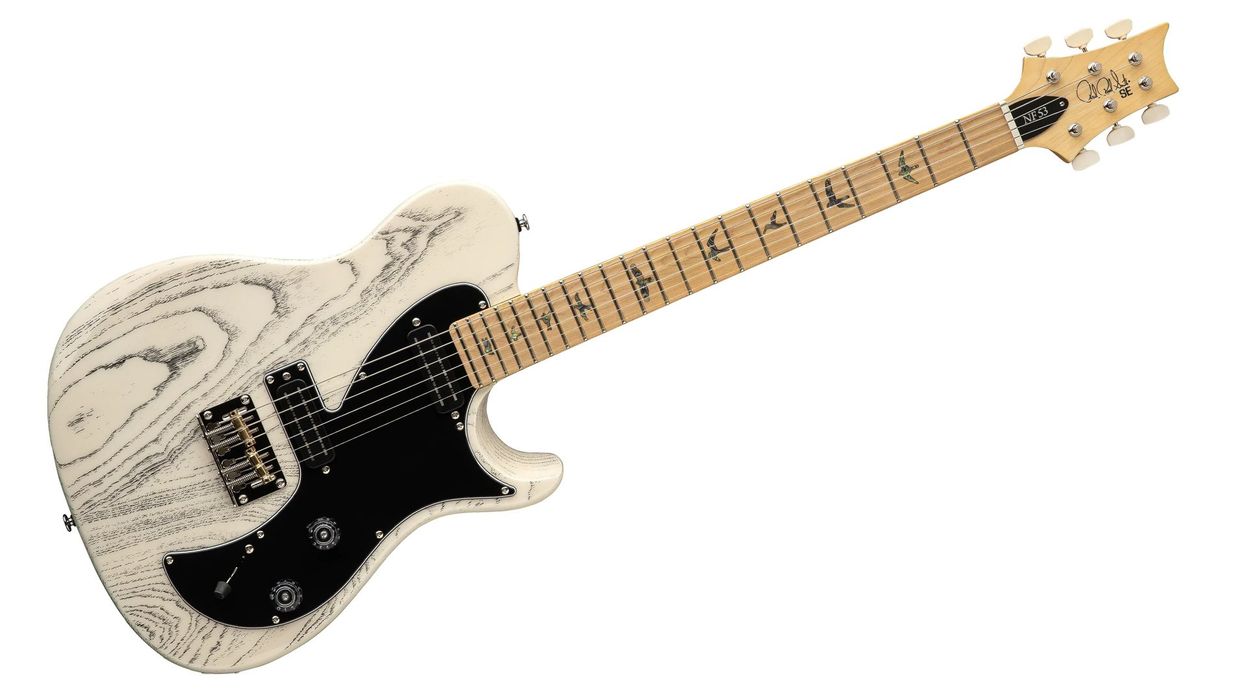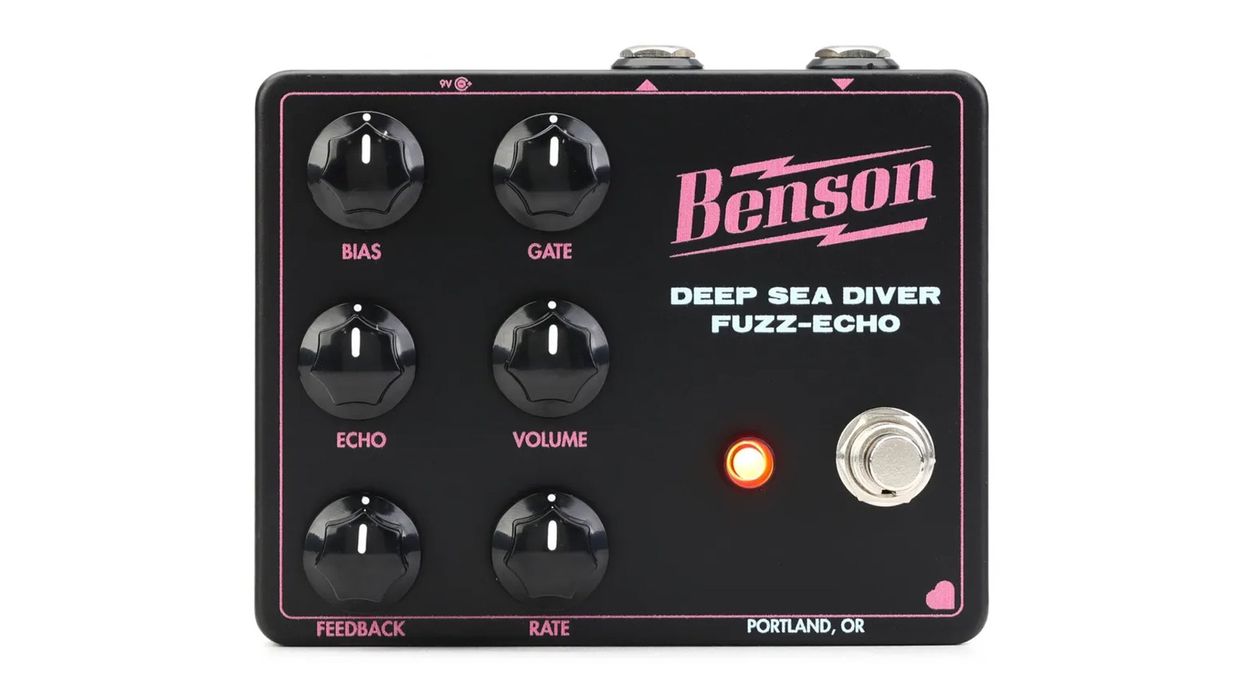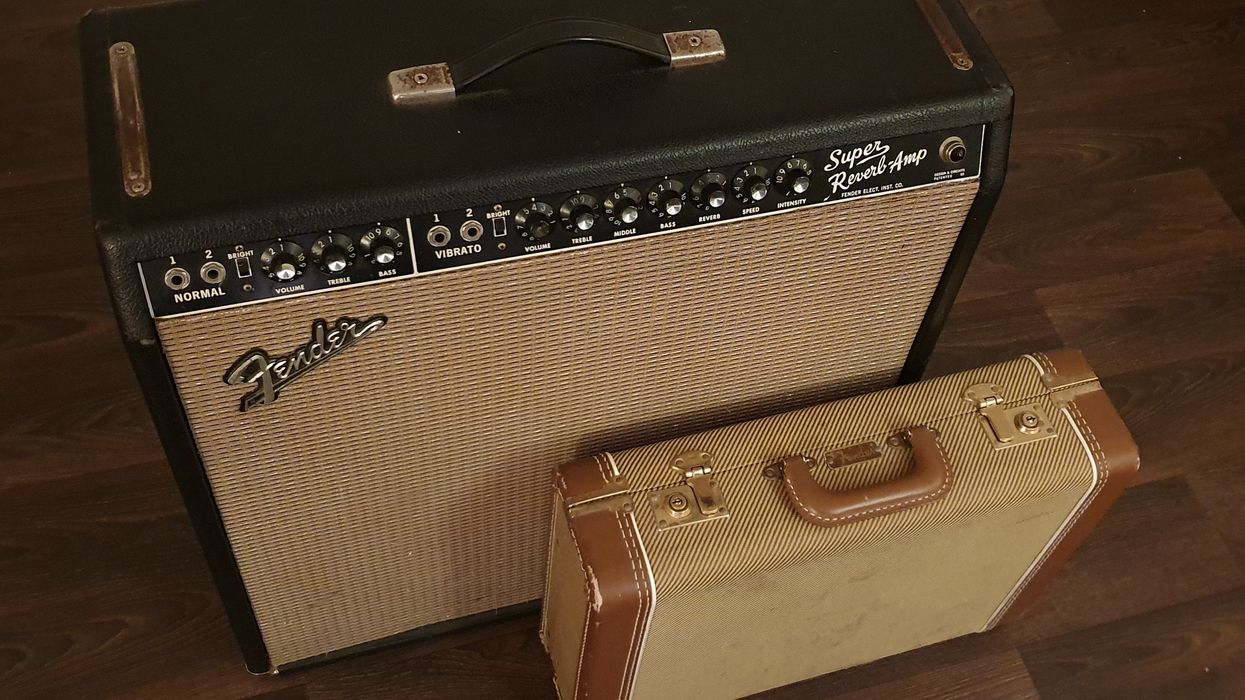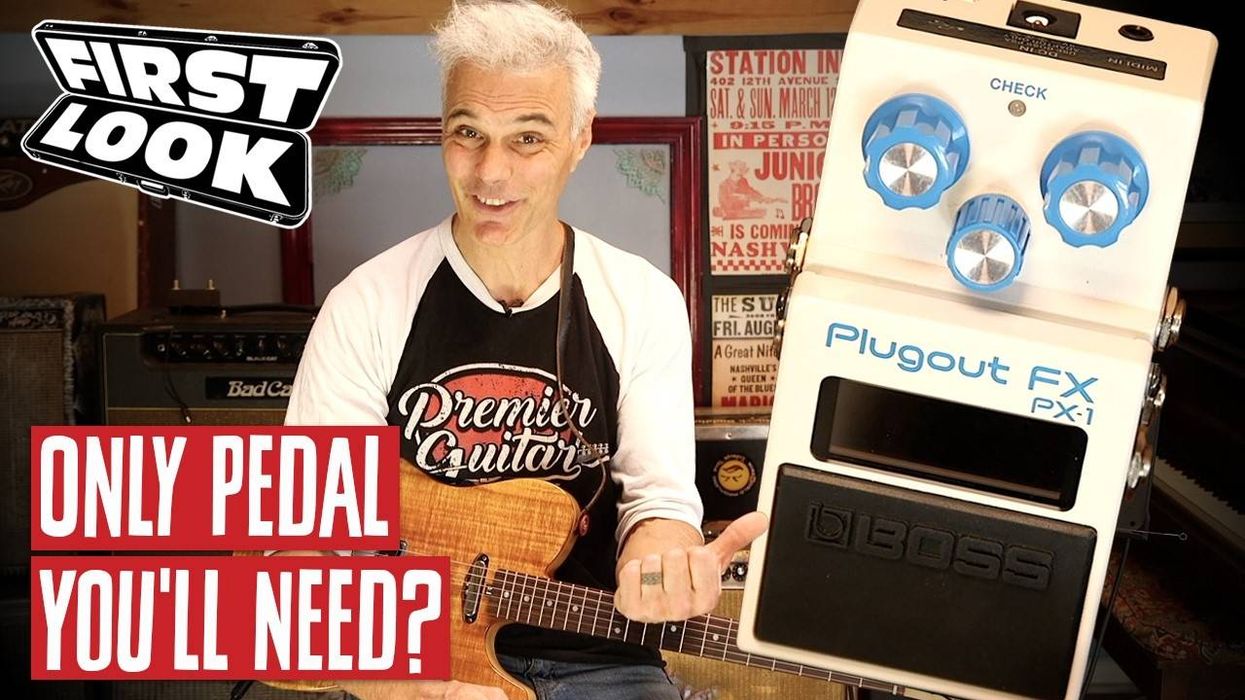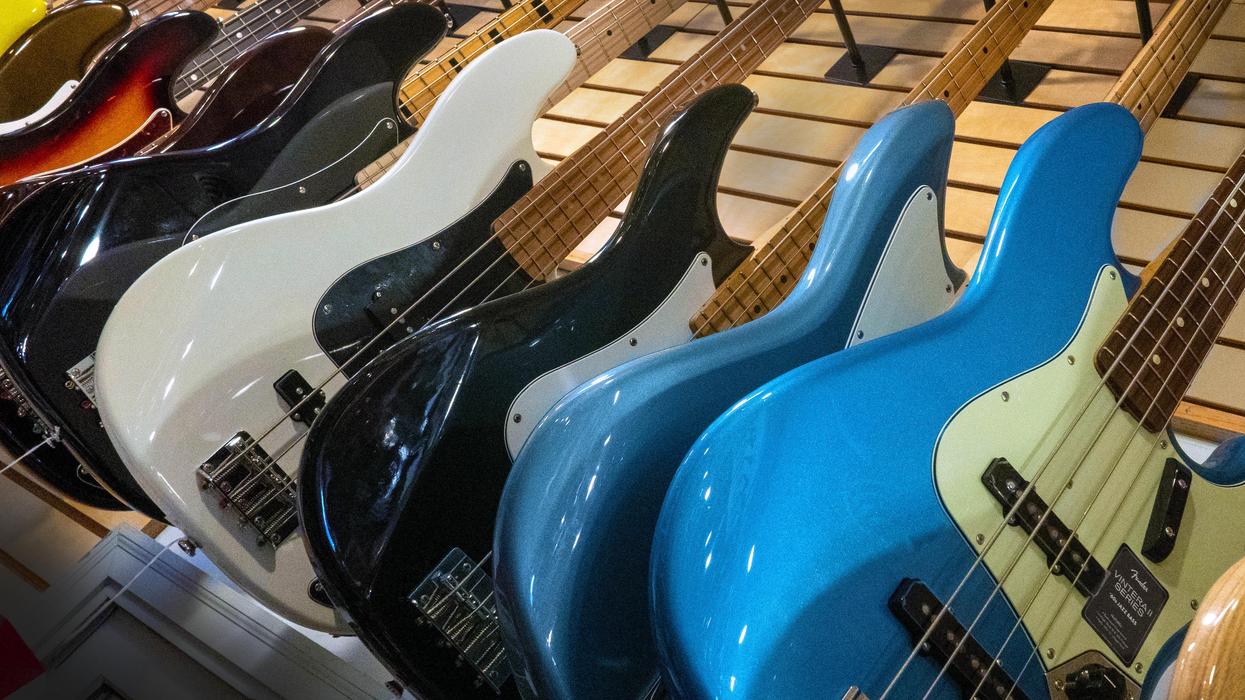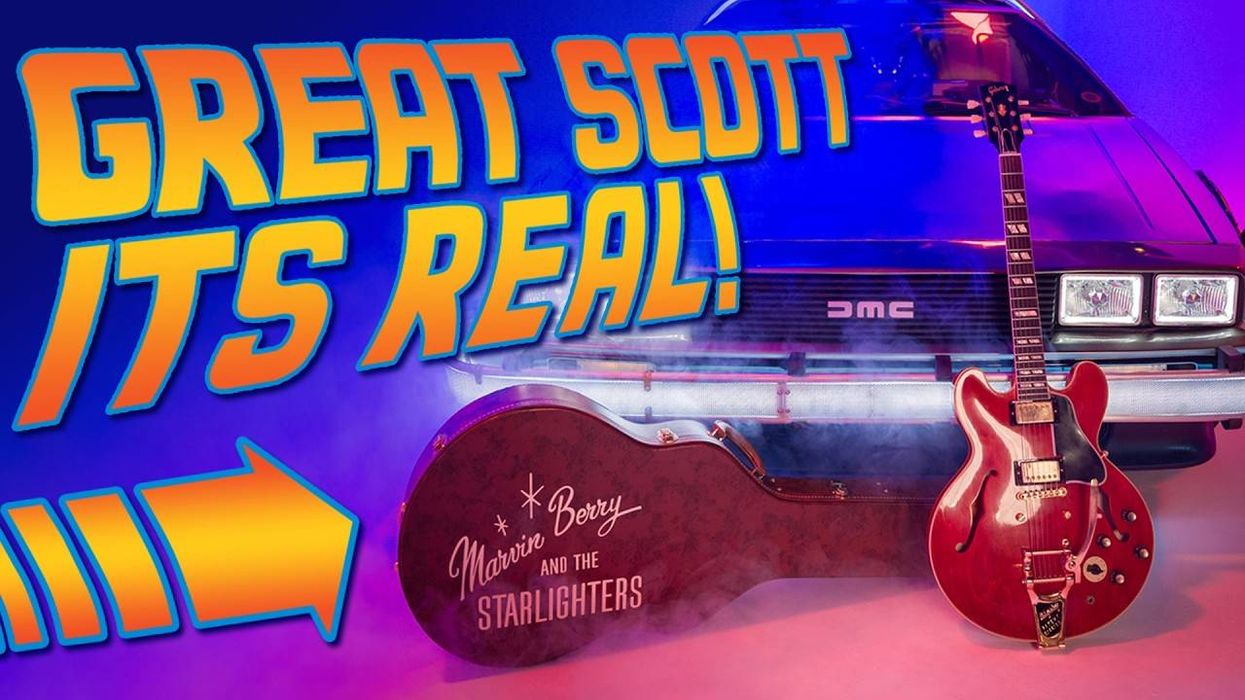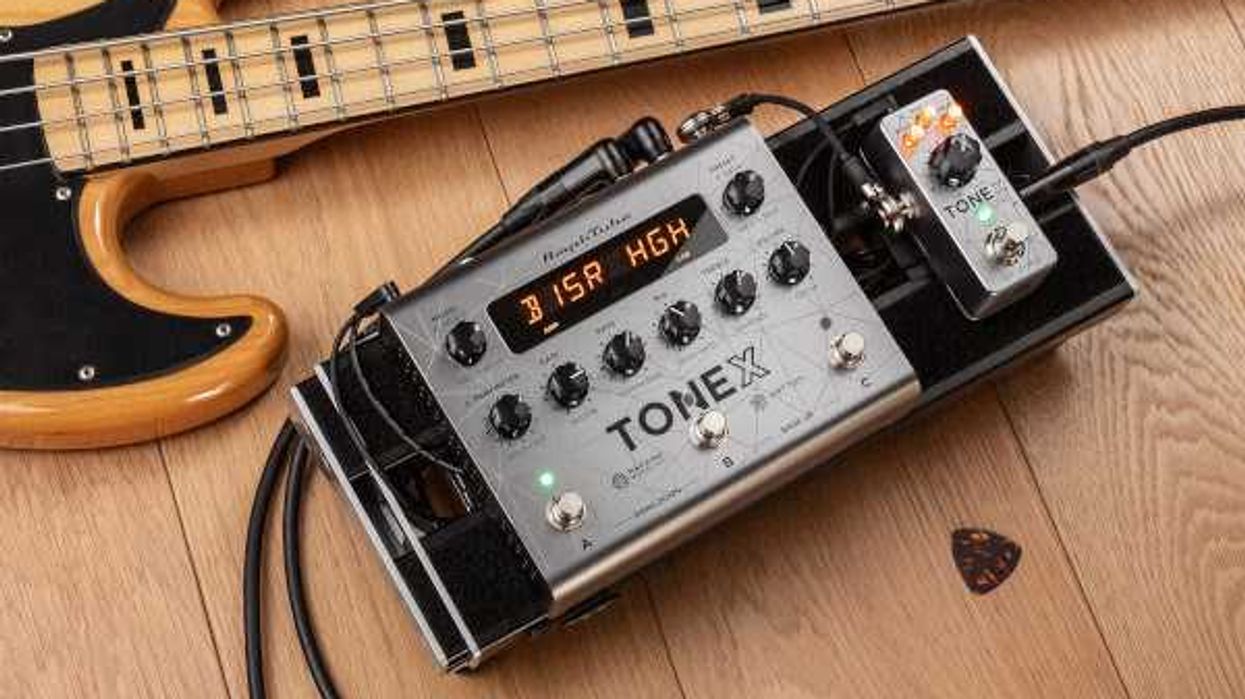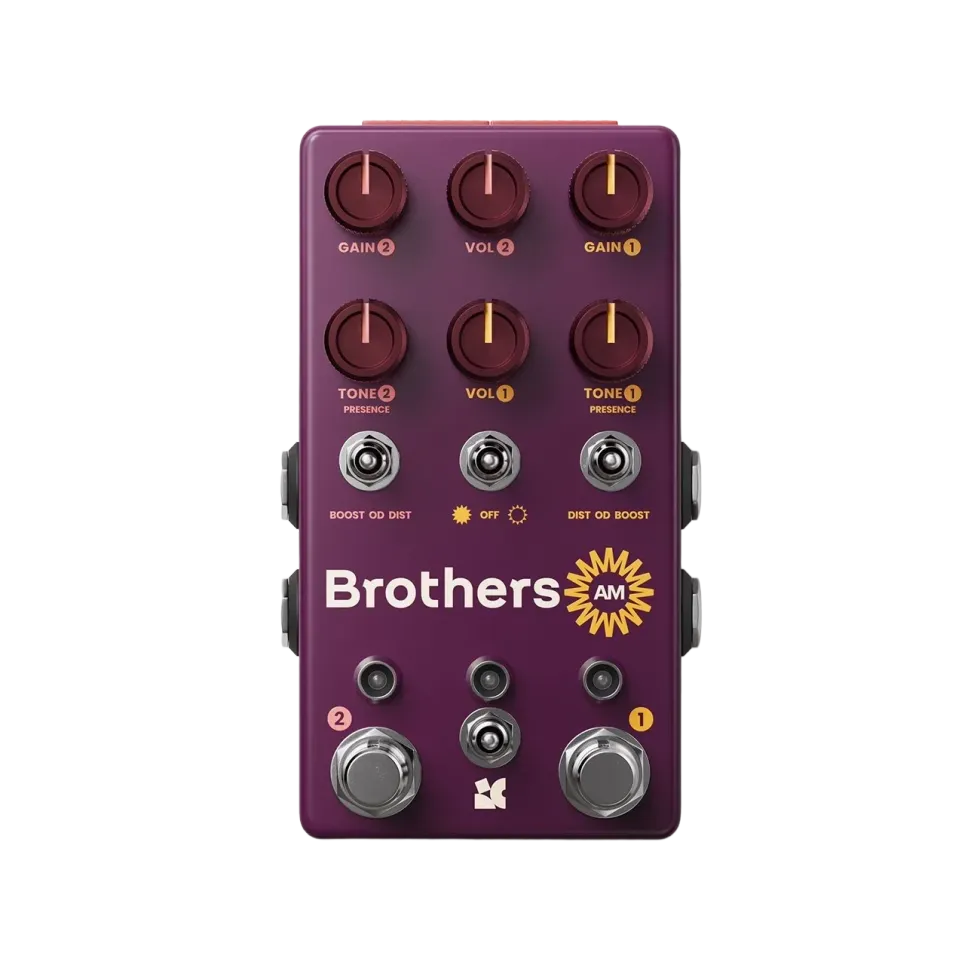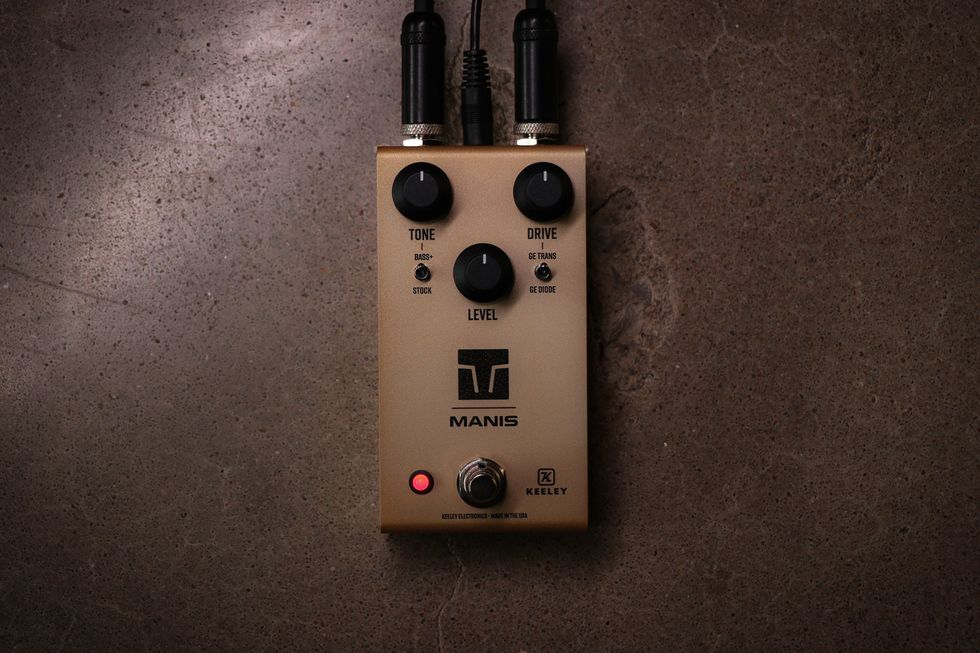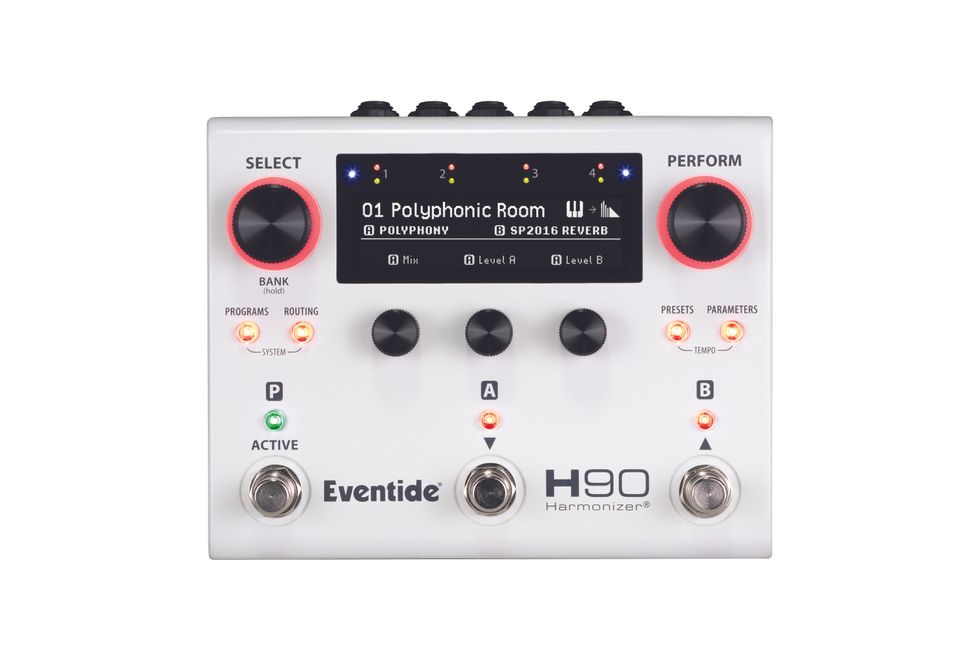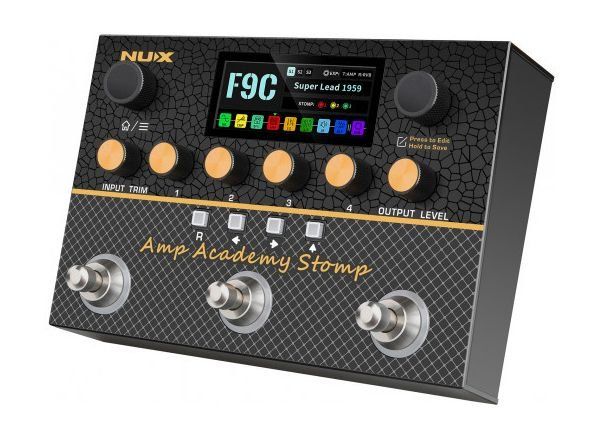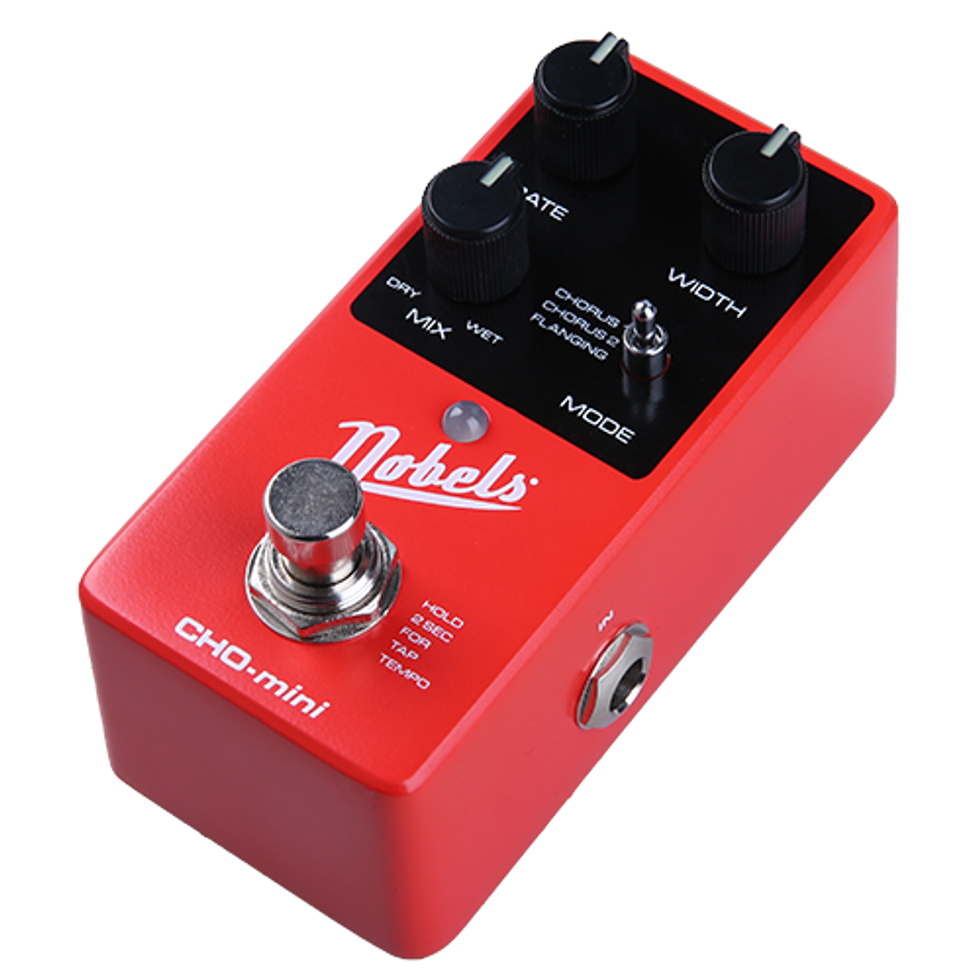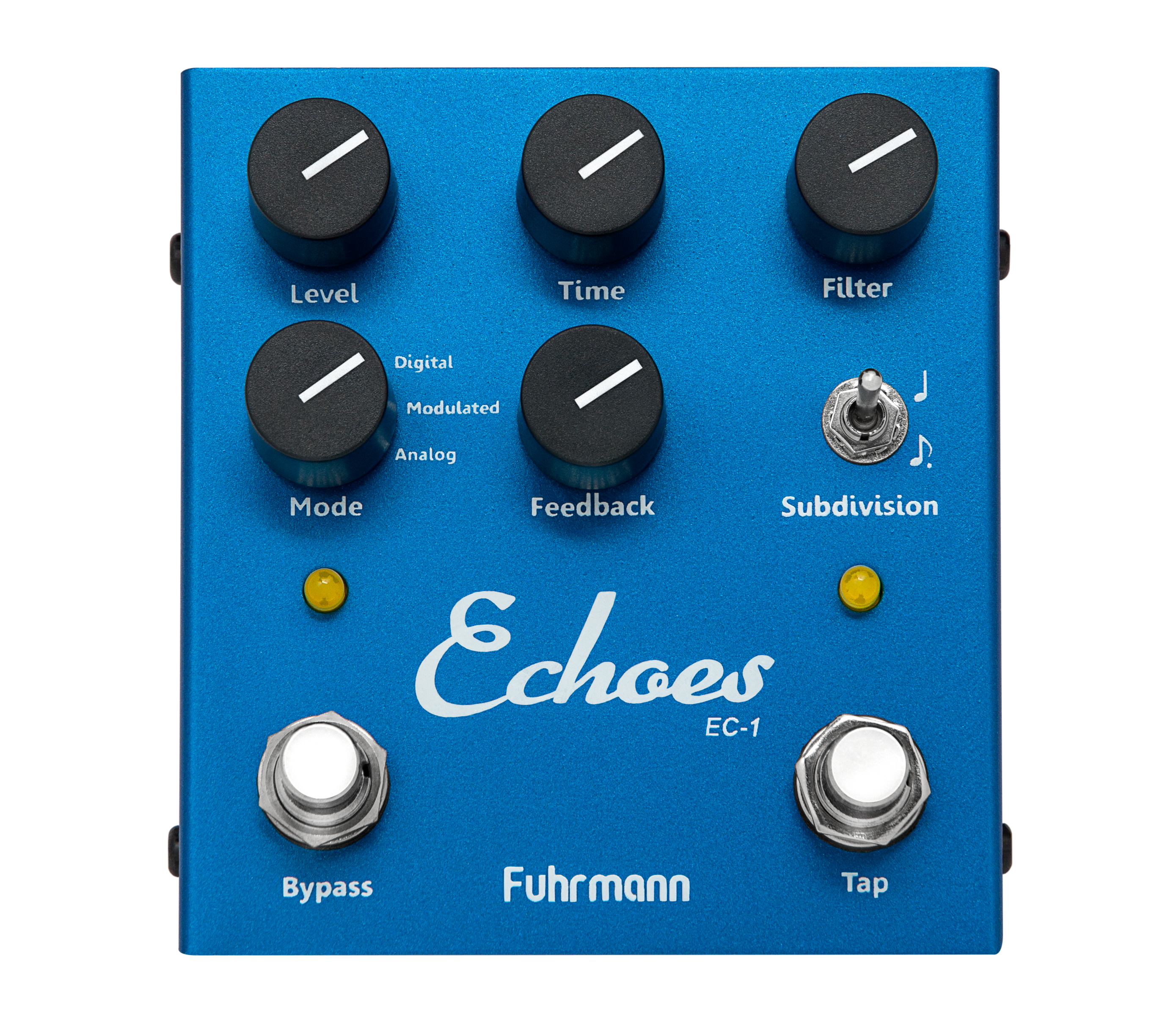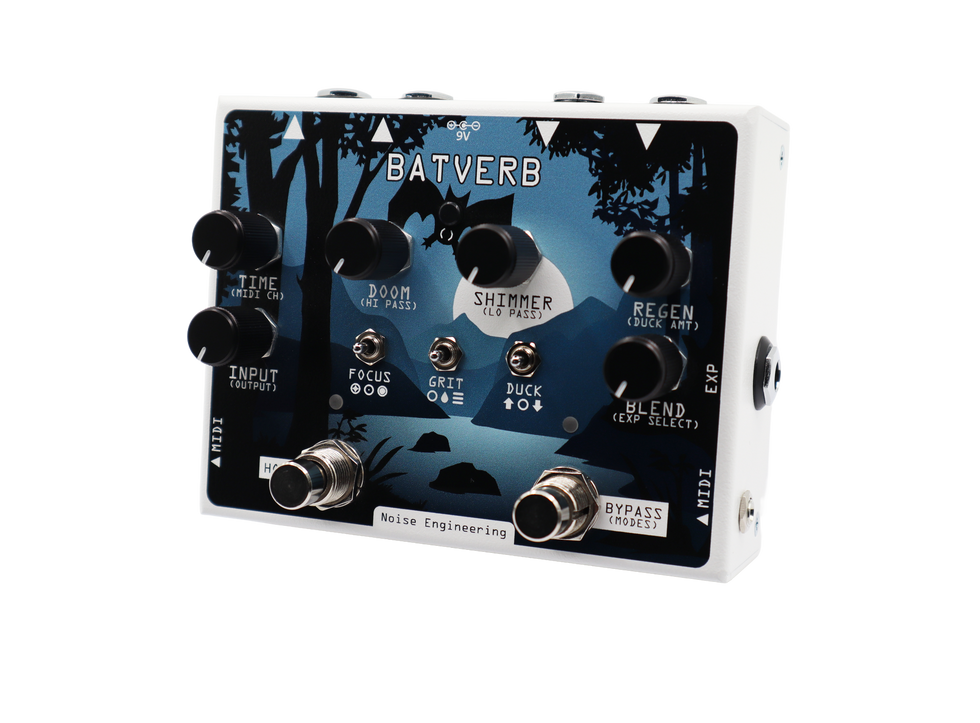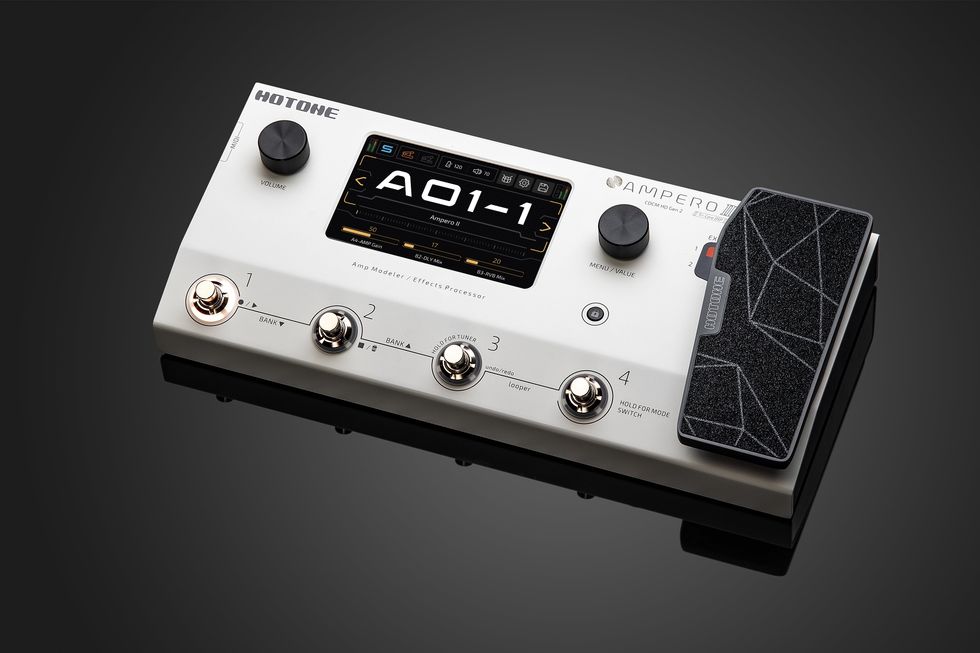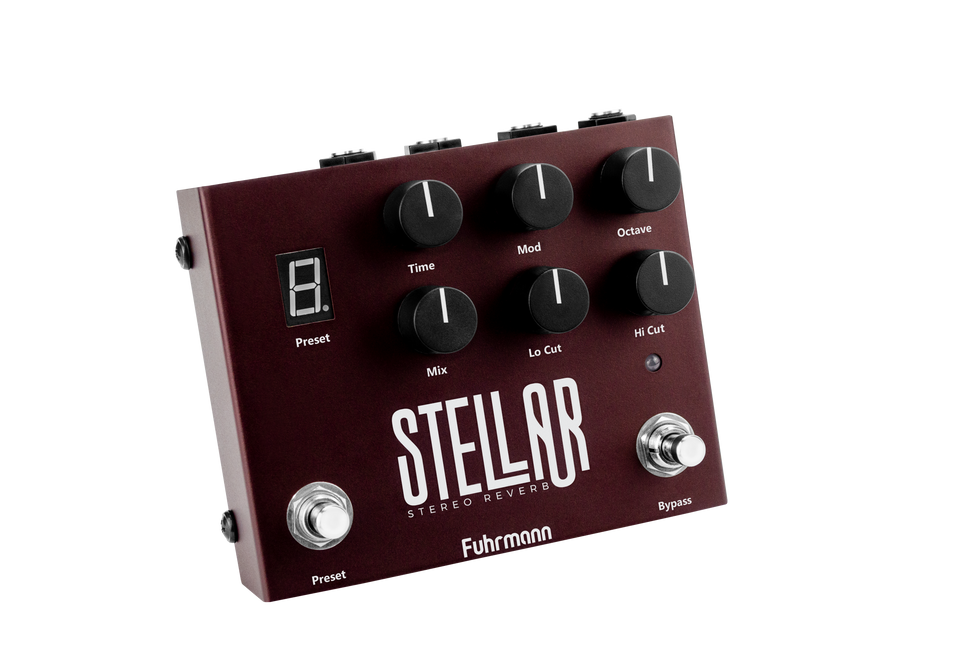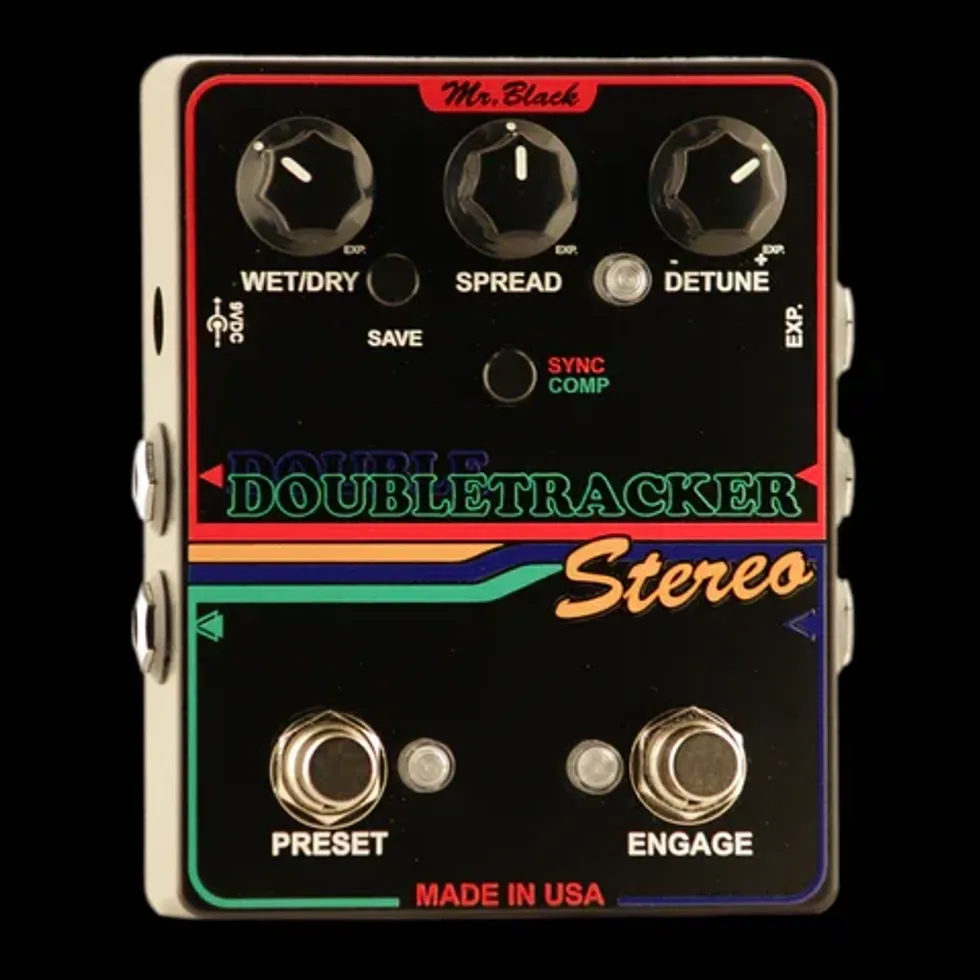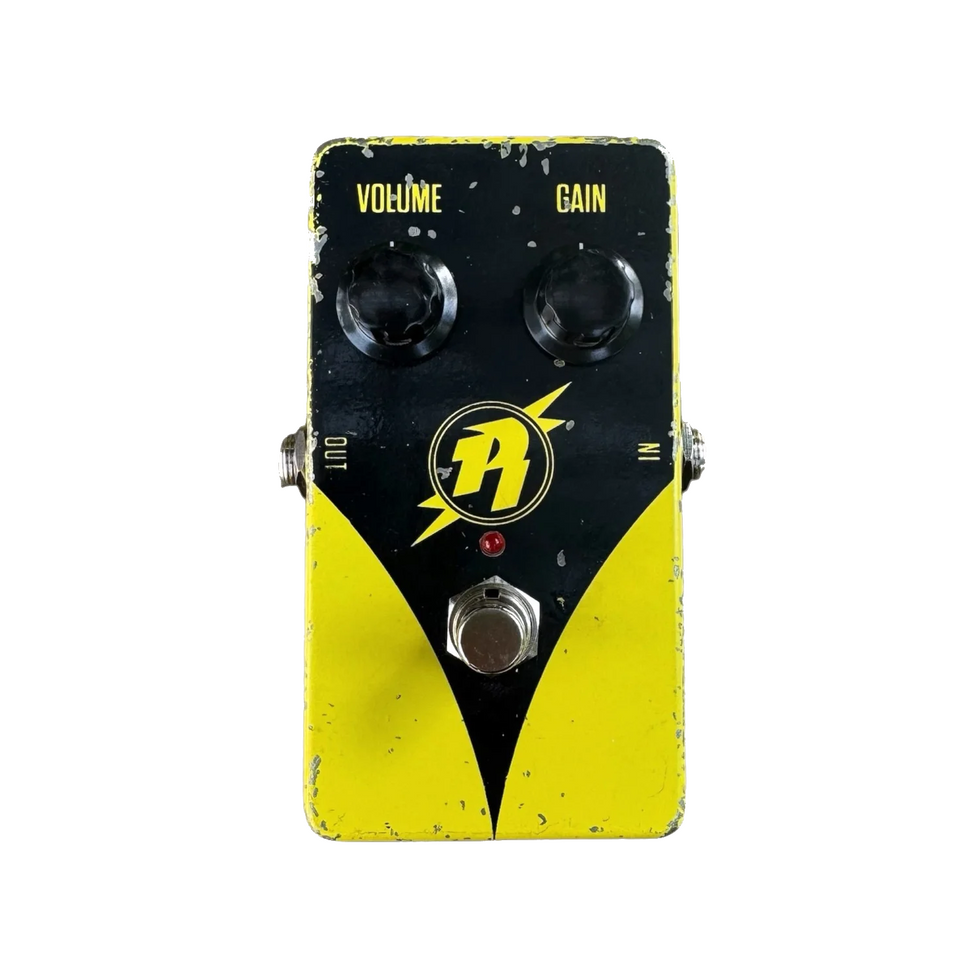I’ve been on a streamlining kick lately. Where stompboxes are concerned, that trend has manifested itself in all kinds of odd exercises, like forcing myself to use no more pedals than will fit in a lunchbox, or on a roof shingle. It’s hard to say what these exercises reveal about my mental state. But I’ve realized one thing: I don’t think I can shrink my pedal rig to much less than a boost, a vibrato, and a delay.
So, the Eventide Riptide is, in some ways, the pedal of my downsizing dreams. It consolidates excellent digital approximations of the optical-circuit-based Shin-Ei Uni-Vibe and variations on that theme, with two digital overdrives. The two effects can be used independently or together, and you can flip the routing of both. The Riptide also allows the player to dig deep into the possibilities of these sounds, offering stereo output, five onboard presets, and expression pedal functionality that enables you to change any parameter, in any direction, with a single expression pedal sweep. There are certainly cool possibilities here that a dedicated overdrive and Uni-Vibe or phaser effect cannot easily cover.
Born of the Mothership
Like the TriceraChorus stomp that Eventide released in 2021, the Riptide has origins in algorithms from the capable and expansive H90—in this case the Weedwacker Tube Screamer-style overdrive and the Even-Vibe Uni-Vibe model, which, together, make up the H90’s Hendrix-inspired Indigo Fog preset. The Riptide features two variations on those algorithms in the form of a less midrange-y red overdrive (selected via the small button above the drive footswitch) and a red Uni-Vibe setting, which is a more phase-forward take on the green Uni-Vibe sound.
On the Uni-Vibe side of the effect, the controls essentially correspond to that of a real Uni-Vibe, with the partial exception of the vibe knob, which at some counterclockwise settings effectively doubles as an effects-level control. At its furthest clockwise position, the vibe knob removes the unaffected signal, taking the place of the vibrato setting on a Uni-Vibe rocker switch and producing pure pitch-vibrato. At noon, the control approximates the sounds of a Uni-Vibe in its more famous chorus mode (which actually functions more like a phaser, but that is a story for another time). This configuration of the vibe control means you can create blends of the vibrato and chorus effect or, on the counterclockwise side of noon, use high intensity modulations at low mix levels. This extends the utility and musical flexibility of the vibe effect significantly. The three knobs assigned to the drive side of the pedal—drive, tone, and level—are the same as the Tube Screamer and other drive pedals.
Watch for Wobbly Drivers
No Uni-Vibe worth its salt is subtle, but the Riptide is extroverted in its own way. It’s unmistakably a Uni-Vibe sound, and a nice one at that, with plenty of chewy, vocal elasticity in the modulations. But compared to real Uni-Vibes I’ve met (memories of which are less than fresh) and the modern optical vibe effect I used for reference, the Even-Vibe section has a slight high-mid and treble emphasis that, to my ear, makes some intense modulations a little less rubbery and vowel-y. There are advantages to this kind of tone profile. Humbuckers sound a lot less muddy with heavy modulations, for one thing, and if you use Fender-style single-coils it’s unlikely you’ll go missing in a mix.
“No Uni-Vibe worth its salt is subtle, but the Riptide is extroverted in its own way.”
The toppier profile also has advantages in many of the blended chorus and vibrato settings, and when the modulations are backgrounded in the mix. In the former, the extra high-end seems to accent some pitch wobble effects, lending complexity and cool whistling overtones to combined chorus/vibrato voices. In the latter application, it contributes a little extra cut to low effect mixes that lends a ghostly presence. The phasier “red” voice, by the way, does strike a cool balance between Uni-Vibe and Phase 90-style tones. But it also offers sounds that exist outside the Uni-Vibe canon that will give more experimentally minded players lots to work with.
The Verdict
There are few modulation textures as liquid or capable of shifting the mood of a song as a Uni-Vibe. The Riptide has the same power to compel and push a song or a player’s approach in soulful, manic, and explosive ways. It has its own tone signature, and for many players that high-mid-forward emphasis will be preferable—particularly, I would guess, for Hendrix and Gilmour fans trying to coax Fuzz Face and Marshall qualities from, say, a Les Paul and a Fender Deluxe. You could argue that $299 is steep for such a specialized effect. But you’ll pay at least that much for an overdrive and a decent Uni-Vibe clone with many fewer routing and customization capabilities. If you’ve never messed with a Uni-Vibe clone before, a world of weird and wobbly awaits. But purists, too, will find plenty of thrills in this smart, compact combination of effects.






